Trending
Opinion: How will Project 2025 impact game developers?
The Heritage Foundation's manifesto for the possible next administration could do great harm to many, including large portions of the game development community.

Featured Blog | This community-written post highlights the best of what the game industry has to offer. Read more like it on the Game Developer Blogs or learn how to Submit Your Own Blog Post
The 2nd of a 4-part series. Video game composer Winifred Phillips shares ideas from her GDC 2019 talk, How Music Enhances Virtual Presence. Part 2: Game Music and Psychological Attachment. Included are practical examples and video demonstrations.

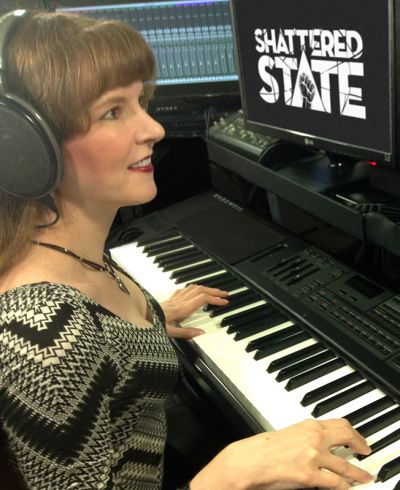
By Winifred Phillips | Contact | Follow
So happy you've joined us! I'm video game composer Winifred Phillips, and this is the continuation of our four-part discussion of how music can enhance presence in virtual reality. These articles are based on the presentation I gave at this year's Game Developer's Conference in San Francisco, entitled How Music Enhances Virtual Presence (I've included the official description of my talk at this end of this article). In my GDC talk, I discussed Virtual Presence in connection with seven of the virtual reality games and experiences that I've scored, which have either released within the past year or will be released within the coming months. These include Audioshield (Audiosurf LLC), Bebylon Battle Royale (Kite & Lightning), Fail Factory (Armature Studio), The Haunted Graveyard (Holospark), Life Hutch VR (Next Stop Willoughby), Scraper: First Strike (Labrodex Inc), and Shattered State (Supermassive Games). If you missed the first article exploring how Flow can support Virtual Presence in VR gaming, please go check that article out first.
Are you back? Great! Let's continue!
Now that we’ve taken a look at how Flow can best enable Virtual Presence in VR, let’s look at the second mechanism by which music enables Virtual Presence:
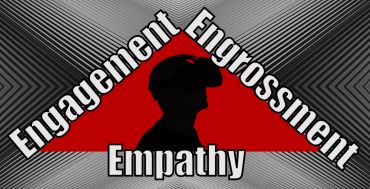 In a paper presented at the Computer-Human Interaction conference, a research team from Carnegie-Mellon defined Virtual Presence as “the extent to which a person’s Cognitive and perceptual systems are tricked into believing they are somewhere other than their physical location.” This assertion formed the jumping-off point for two researchers from University College London, who set out to define what specific circumstances could lead to Virtual Presence in gaming. They developed a model for how gamers developed the psychological attachment necessary to achieve Virtual Presence. Their model consists of three stages:
In a paper presented at the Computer-Human Interaction conference, a research team from Carnegie-Mellon defined Virtual Presence as “the extent to which a person’s Cognitive and perceptual systems are tricked into believing they are somewhere other than their physical location.” This assertion formed the jumping-off point for two researchers from University College London, who set out to define what specific circumstances could lead to Virtual Presence in gaming. They developed a model for how gamers developed the psychological attachment necessary to achieve Virtual Presence. Their model consists of three stages:
Engagement
Engrossment
Empathy
So let's start with the first stage.
We can define engagement as the commitment of the player to remain focused on the game. Note that this is all about energy and attention – it’s not about emotion. Engagement is a motivational tool. Since music has long been one of the top methods to help motivate people, it makes sense to use music as a tool for helping players achieve engagement. This becomes especially important when striving for Virtual Presence. Let’s look at an example from one of my VR projects.
![]() In Shattered State, developed by Supermassive Games, players are thrown into the job of Director of the National Intelligence Agency during a crisis situation involving terrorists, bomb threats, and a possible military coup. The player must make quick decisions with profound repercussions, then watch the results of those choices. It was important for players to feel committed to the action. So the audio director at Supermassive and I developed an interactive music system that scaled in energy and intensity as the stakes grew higher.
In Shattered State, developed by Supermassive Games, players are thrown into the job of Director of the National Intelligence Agency during a crisis situation involving terrorists, bomb threats, and a possible military coup. The player must make quick decisions with profound repercussions, then watch the results of those choices. It was important for players to feel committed to the action. So the audio director at Supermassive and I developed an interactive music system that scaled in energy and intensity as the stakes grew higher.
The music system of Shattered State featured abrupt changes during the interval in which decisions must be made, to draw the player’s attention toward the in-game decision-making menu, and to provide a conducive atmosphere for considering hard choices. The design of the music system also focused on keeping the player’s attention while the consequences of their decisions played out before them. The thrust of the system was about motivation, not about emotional reaction, and I composed the music to emphasize shifts in energy.
Let’s take a look at how that worked. Notice how the music adjusts whenever the player makes a significant choice during this six-minute gameplay video from the Shattered State VR game:
The music system of Shattered State focuses on maintaining player engagement, and this helps to reinforce psychological attachment to the experience. So now that we’ve considered engagement, let’s move to the second of the three stages of psychological attachment:
 Engrossment goes beyond simple motivation or focus. When players are engrossed, they reach this state because, according to the aforementioned researchers from University College London, “game features combine in such a way that the gamers’ emotions are directly affected by the game.” The researchers cite various popular game characteristics that can achieve this, including the visuals, the tasks, and the plot.
Engrossment goes beyond simple motivation or focus. When players are engrossed, they reach this state because, according to the aforementioned researchers from University College London, “game features combine in such a way that the gamers’ emotions are directly affected by the game.” The researchers cite various popular game characteristics that can achieve this, including the visuals, the tasks, and the plot.
Music has the ability to effect all three of these characteristics. For the visual elements in a game, music not only influences what we see, but how much we see. At the University of Groningen in the Netherlands, a study showed that the overall mood of music can influence what visuals we notice while listening. Happy music causes us to see pleasant details, while sad music brings more grim sights to our attention.
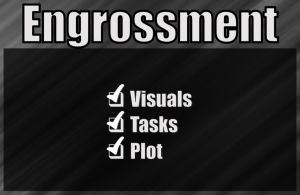 In regards to tasks, music has long been known to make tasks more enjoyable and rewarding. A study at the University of Windsor showed that listening to music while working not only increases enjoyment of the work, but also increases the quality of the work as well.
In regards to tasks, music has long been known to make tasks more enjoyable and rewarding. A study at the University of Windsor showed that listening to music while working not only increases enjoyment of the work, but also increases the quality of the work as well.
Finally, music can intensify our appreciation for and understanding of plot. At the Universität Hildesheim in Germany, researchers conducted a study that paired vastly different musical scores with the same short film, to see if study subjects would be influenced by the music to interpret the plot of the film in different ways. They concluded that when the music was altered, the interpretation of the plot was dramatically altered as well, even though the events in the short film remained unchanged.
The common thread here is that players need to feel a sense of emotional connection – to visuals, to tasks, and to plot. When we’re trying to stimulate player engrossment, we’re specifically reaching out to their emotions. Music is well known for enhancing the inherent emotion of a situation, but I’d like to direct our attention to a specific example in which music is used to introduce emotional states to situations where the mood is otherwise undefined.
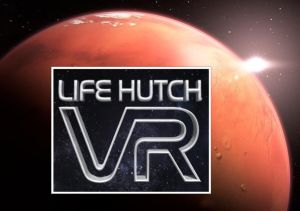 One of my most recent projects is the Life Hutch VR game, which will be released on September 1st 2019 for the Valve Index, the Oculus Rift and the HTC Vive. Life Hutch was created by the expert development team at Next Stop Willoughby, and is based on the famous short story written by world-renowned science fiction author Harlan Ellison. Life Hutch is an outer-space saga with a weird, surreal quality. As a story told out-of-sequence, many of the events in the game convey layers of elusive double-meaning, without any context to interpret the strangeness. This is a part of what makes Life Hutch compelling.
One of my most recent projects is the Life Hutch VR game, which will be released on September 1st 2019 for the Valve Index, the Oculus Rift and the HTC Vive. Life Hutch was created by the expert development team at Next Stop Willoughby, and is based on the famous short story written by world-renowned science fiction author Harlan Ellison. Life Hutch is an outer-space saga with a weird, surreal quality. As a story told out-of-sequence, many of the events in the game convey layers of elusive double-meaning, without any context to interpret the strangeness. This is a part of what makes Life Hutch compelling.
My job as the video game composer for this project was to project an undercurrent of raw emotion into the mix, to make events feel strange or disquieting, even when objective circumstances didn’t seem to warrant those feelings. The goal was to stir up disconcerting emotional states. Here’s a gameplay sequence in which the player is tasked with rapidly crossing a hostile planet surface of steaming rock and lava flows. Rather than conveying the objective momentum of urgency and risk, the music expresses subjective, unsettling emotions instead:
As we just saw in that gameplay sequence, the music of Life Hutch sought to keep players emotionally engrossed by challenging them with unexpected moods. By keeping players on edge, the musical score sought to stir up the strong emotions that could help players feel a more powerful and awesome sensation of Virtual Presence.
So we've now discussed two mechanisms by which psychological attachment can help to support Virtual Presence. In our next article, we'll examine the third component of psychological attachment – empathy. Looking forward to seeing you then!
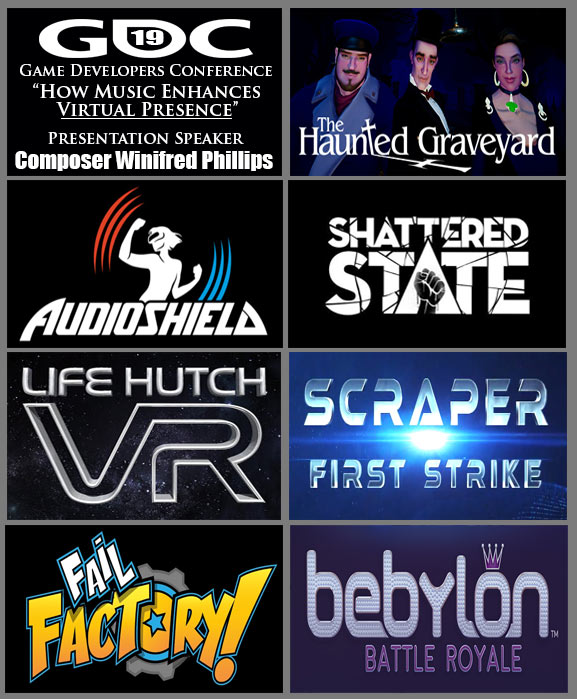
(Game Developers Conference Session Description)
Virtual Presence is defined as a state in which gamers fully accept the virtual world around them and their existence within it. This talk, “How Music Enhances Virtual Presence,” will explore how highly effective game music can enhance the sensation of Virtual Presence in VR gaming.
The talk will begin with an exploration of both the Flow Theory of Mihaly Csikszentmihalyi and the research of Dr. Paul Cairns on psychological engagement in video gaming. By understanding how the mental activity of players interacts with the way a game is designed, composers can create music intended to induce psychological states conducive with the formation of Virtual Presence.
The talk will include a discussion of techniques aimed at drawing attention to mission objectives, facilitating effective concentration, enhancing emotional empathy and intensifying player focus. The discussion will also include an exploration of some inherent drawbacks to Virtual Presence, including its fragility when exposed to negative emotional states, and its possible susceptibility to inducing the “event boundary” phenomenon. Musical solutions to these problems will be explored.
Phillips' talk will offer techniques for composers and audio directors who seek to employ music as a tool to enhance Virtual Presence for their players.
Takeaway
Using examples from several games, Phillips will explore how music can influence the mental states of players through specific effects documented in scientific research. Study data will be discussed in regards to the interaction between music and cognition. Phillips will offer strategies and tips for composers seeking to use their music to influence the player’s mental state, thus facilitating the formation of Virtual Presence.
Intended Audience
This session is intended to inspire and stimulate composers seeking to employ their music towards enhancing player engagement and enjoyment, with a particular emphasis on VR games. Includes overview of Flow Theory and the psychological components of Virtual Presence, which may be useful to other disciplines within game development. Talk will be approachable for all levels (advanced composers may better appreciate the specific composition techniques discussed).
 Popular music from composer Winifred Phillips' award-winning Assassin's Creed Liberation score is currently being performed live by a top 80-piece orchestra and choir as part of the Assassin's Creed Symphony World Tour, which kicked off in June 2019 with its Paris premiere. As an accomplished video game composer, Phillips is best known for composing music for games in five of the most famous and popular franchises in gaming: Assassin’s Creed, LittleBigPlanet, Total War, God of War, and The Sims. Phillips' other notable projects include the triple-A first person shooter Homefront: The Revolution, and numerous virtual reality games, including Sports Scramble, Audioshield, Scraper: First Strike, Dragon Front, and many more. She is the author of the award-winning bestseller A COMPOSER'S GUIDE TO GAME MUSIC, published by the MIT Press. As a VR game music expert, she writes frequently on the future of music in virtual reality games. Phillips' is a sought-after public speaker, and she has been invited to speak about her work as a game composer at the Library of Congress, the Game Developers Conference, the Audio Engineering Society, the Society of Composers and Lyricists, and many more.
Popular music from composer Winifred Phillips' award-winning Assassin's Creed Liberation score is currently being performed live by a top 80-piece orchestra and choir as part of the Assassin's Creed Symphony World Tour, which kicked off in June 2019 with its Paris premiere. As an accomplished video game composer, Phillips is best known for composing music for games in five of the most famous and popular franchises in gaming: Assassin’s Creed, LittleBigPlanet, Total War, God of War, and The Sims. Phillips' other notable projects include the triple-A first person shooter Homefront: The Revolution, and numerous virtual reality games, including Sports Scramble, Audioshield, Scraper: First Strike, Dragon Front, and many more. She is the author of the award-winning bestseller A COMPOSER'S GUIDE TO GAME MUSIC, published by the MIT Press. As a VR game music expert, she writes frequently on the future of music in virtual reality games. Phillips' is a sought-after public speaker, and she has been invited to speak about her work as a game composer at the Library of Congress, the Game Developers Conference, the Audio Engineering Society, the Society of Composers and Lyricists, and many more.
Follow her on Twitter @winphillips.
You May Also Like